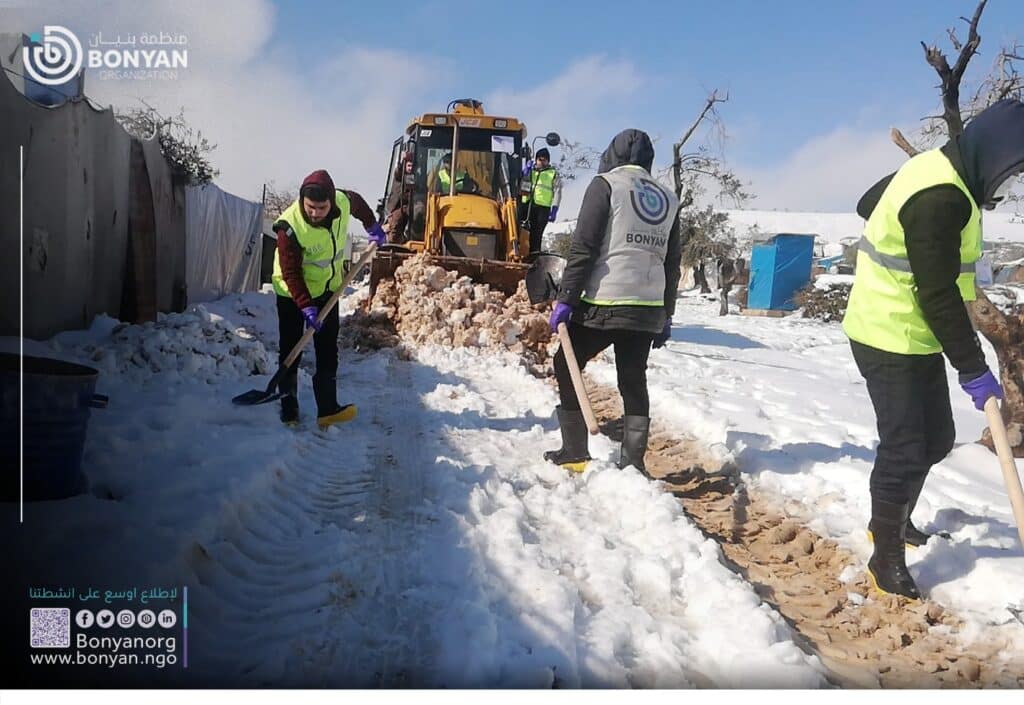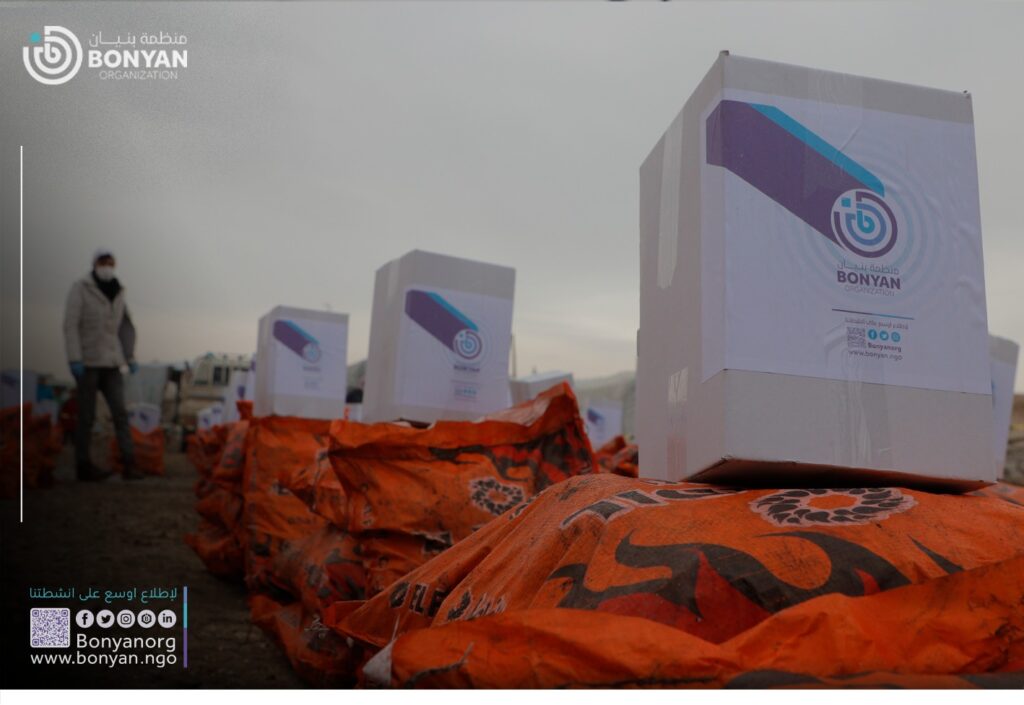Winter poses formidable challenges for Syrian refugees in camps, amplifying the hardships of displacement. As temperatures plummet in Northern Syria, makeshift camps in Lebanon and Syria struggle to provide adequate shelter, leaving families vulnerable to the biting cold.
The lack of resources further compounds the issue, making it difficult for displaced families to acquire essential items like warm clothing, blankets, and heating.
This article delves into the struggles faced by Syrian refugees during winter, shedding light on the weather-related problems, inadequate shelter, health risks, limited resources, and the increased hardship experienced by these resilient individuals.
Winter in Northern Syria
Winter in Northern Syria brings severe weather conditions, presenting significant challenges for the population. The region experiences bitter cold, snow, violent storms, and anticipated snowstorms during winter.
The harsh conditions exacerbate existing vulnerabilities, with freezing temperatures, heavy rains, and shortages of fuel making the situation worse.
In response, humanitarian efforts focus on winterization, providing essential items such as heating, warm clothing, and shelter to mitigate the impact of the cold.
How Winter Increases the Suffering of Syrian Refugees in Refugee Camps
Winter compounds the plight of Syrian refugees in camps, intensifying their already challenging circumstances:
Extreme Weather Conditions
As winter sets in, the arrival of heavy snowfall and bone-chilling temperatures compounds the already challenging circumstances faced by refugees. The extreme weather conditions during winter create a formidable environment, adding layers of difficulty to the daily lives of displaced individuals.
The heavy snowfall blankets the refugee camps, covering makeshift shelters and pathways, impeding movement and making basic tasks arduous. Navigating through the snow becomes challenging, limiting access to essential services and resources.
The accumulation of snow on fragile shelters further compromises their structural integrity, exposing refugees to the harsh elements.
Simultaneously, the bitter cold penetrates the very fabric of the camps, making it exceedingly challenging for refugees to stay warm. Inadequate insulation and limited heating options in makeshift dwellings contribute to the biting cold permeating living spaces.
This not only impacts the physical well-being of individuals but also takes a toll on their mental health, as the constant struggle against the cold becomes a pervasive aspect of their daily lives.
Struggle for Adequate Shelter
The harsh winter weather exacerbates the already challenging task of securing adequate shelter for displaced individuals, particularly those living in makeshift camps in Lebanon and Syria. The severity of the weather conditions underscores the critical importance of having robust and protective shelter to shield refugees from the elements.
In makeshift camps, where resources are often scarce, the struggle for suitable shelter intensifies. The structures, often improvised and temporary, face increased vulnerability as they contend with the onslaught of heavy snow, strong winds, and bitterly cold temperatures.
The lack of proper insulation and durability in these makeshift dwellings further compounds the difficulty of providing a safe and warm refuge for displaced families.
Impact of Economic Crisis
The confluence of an economic crisis and harsh winter weather amplifies the suffering of refugees in the region, creating a dire situation for vulnerable families. The economic downturn compounds the already challenging circumstances of displacement, further limiting access to essential resources needed for survival during the unforgiving winter months.
As the economic crisis unfolds, refugees find themselves grappling not only with the lack of financial resources but also with the ripple effects on their ability to secure basic necessities.
Families, already on the margins, face heightened difficulties in procuring warm clothing, fuel for heating, and nutritious food. The increased cost of living exacerbates the struggle to meet these fundamental needs, pushing many to the brink of desperation.
Health Risks
The extreme cold weather during winter poses profound health risks, especially for vulnerable populations such as children, patients, and refugees residing in camps. Exposure to harsh elements becomes a significant concern, heightening the vulnerability of individuals already grappling with the challenges of displacement.
Children, being particularly susceptible, face increased risks to their health as they navigate the frigid conditions. The cold weather puts them at a higher risk of respiratory infections, hypothermia, and other weather-related ailments.
Limited access to warm clothing and proper heating in makeshift shelters exacerbates the health vulnerabilities of these young individuals.
Patients, already contending with existing health concerns, confront heightened challenges during winter. The extreme cold can exacerbate chronic illnesses, compromise immune systems, and impede the recovery process.
Access to adequate medical care becomes even more critical during this period to address the increased health risks faced by patients within the refugee camps.

Suffering a Lack of Food
The challenges arise not only from the scarcity of resources within the camps, but also from external factors that impede the flow of essential provisions.
As refugees often rely on supplies from outside the camps, any disruption in the transportation routes can lead to the closure of camp roads. This logistical challenge becomes a significant barrier, preventing the camps from accessing the much-needed food supplies.en.
Suffering a Lack of Wood for Heaters
Facing a scarcity of wood for heaters, refugees grapple with the harsh cold, relying on makeshift methods to secure warmth.
In their struggle to combat the biting cold, individuals often resort to burning whatever materials they can find—clothes, cardboard, bags, and plastic—depleting precious resources and posing serious risks to their safety. Some even resort to using primitive heaters and stoves, further endangering their lives in their quest for warmth.
The challenges are exacerbated in winter, as the fragility of tents with inadequate walls fails to provide sufficient protection against the cold.
The desperation for warmth leads to the burning of essential items, a makeshift solution that comes at the expense of personal belongings and exacerbates the precarious living conditions in refugee camps.
What do refugees need to face the winter?
The key needs encompass a comprehensive range of assistance:
1. Warm Clothing:
Refugees need adequate warm clothing to protect themselves from the biting cold. Donations of winter-appropriate attire, including jackets, sweaters, and thermal wear, are essential to ensure individuals can maintain their body temperature in freezing conditions.
2. Shelter and Heating:
Providing refugees with suitable shelter is paramount during winter. Durable and weather-resistant housing, coupled with heating solutions, is crucial to protect individuals from the harsh elements. Ensuring refugees have a safe and warm space is vital for their well-being.
3. Food Supplies and Water:
Adequate food supplies, especially nutritionally balanced options, are essential during the winter months. Additionally, access to clean and safe drinking water is critical to prevent dehydration and ensure the overall health of refugees facing challenging weather conditions.
4. Cash Assistance:
Financial support in the form of cash assistance is pivotal for refugees. This aid enables them to meet various basic needs, including acquiring essential winter supplies, paying for heating costs, and covering expenses related to shelter.
Cash assistance empowers refugees to make decisions based on their unique requirements.

Bonyan Organization’s efforts to help Syrian refugees in the winter
As temperatures plummet, our commitment to aiding displaced populations intensifies, with concrete results.
In our Shelter and Non-alimentary Aid Program, we’ve provided urgent shelter for over 3,500 families, offering a protective haven for vulnerable communities.
Simultaneously, our Food Security and Agriculture Program meticulously distributed winterization kits, clothes, benefiting 759,006 individuals, and implemented fire mitigation strategies to safeguard lives.
The Early Recovery and Livelihood Program focuses on rebuilding and fortifying structures for winter resilience, rehabilitating over 51,600 buildings.
Bonyan’s holistic approach extends to maintaining access during harsh weather, providing crucial transportation services for Internally Displaced Persons—serving 99,350 individuals.
Donate to help Syrian refugees in the winter
Join us in weaving a blanket of warmth around those in need. Your support, with tangible impacts, not only brings immediate relief but contributes to a more robust future.
Together, we’ve nurtured resilience and inspired hope for 2,508,336 beneficiaries and counting.
FAQs
What challenges do Syrian refugees face in winter?
Syrian refugees face new hardships during winter, including snow, rain, and storms that affect countries like Syria, Lebanon, Turkey, and Jordan. The basics needed for survival, such as food, clothing, healthcare, shelter, and hygiene items, become more critical during this season.
How do organizations prepare for winter with Syrian refugees?
Organizations engage in winter preparations by delivering core relief items like high-thermal blankets, plastic sheets, and warm clothing to help refugees cope with the harsh conditions.
What is the best way to support Syrian refugees during winter?
The most effective way to support Syrian refugees during winter is through contributions to organizations involved in winter preparations. Donations can help provide essential items such as high-thermal blankets, warm clothing, food, and healthcare, addressing the critical needs of refugees facing harsh winter conditions.




